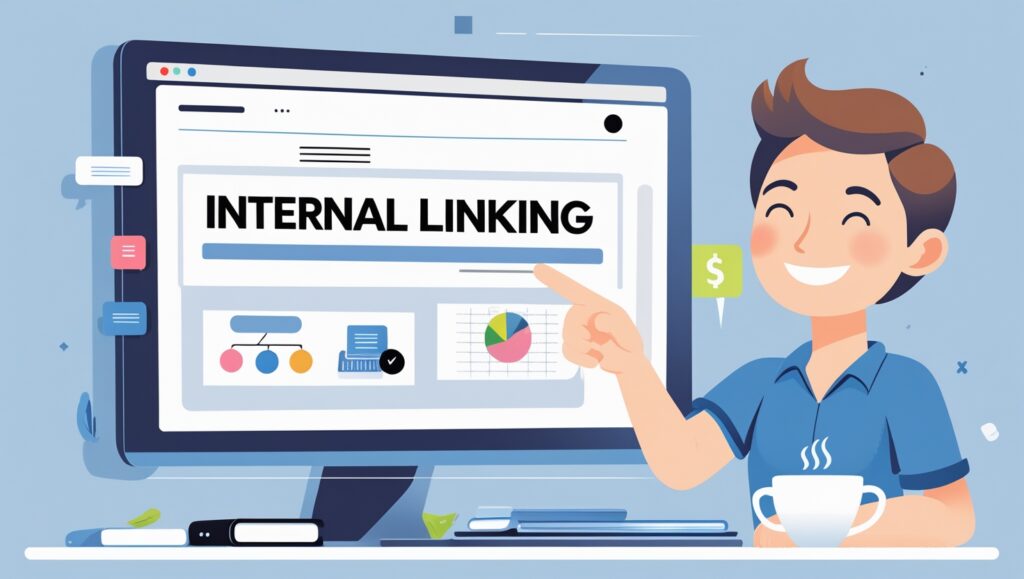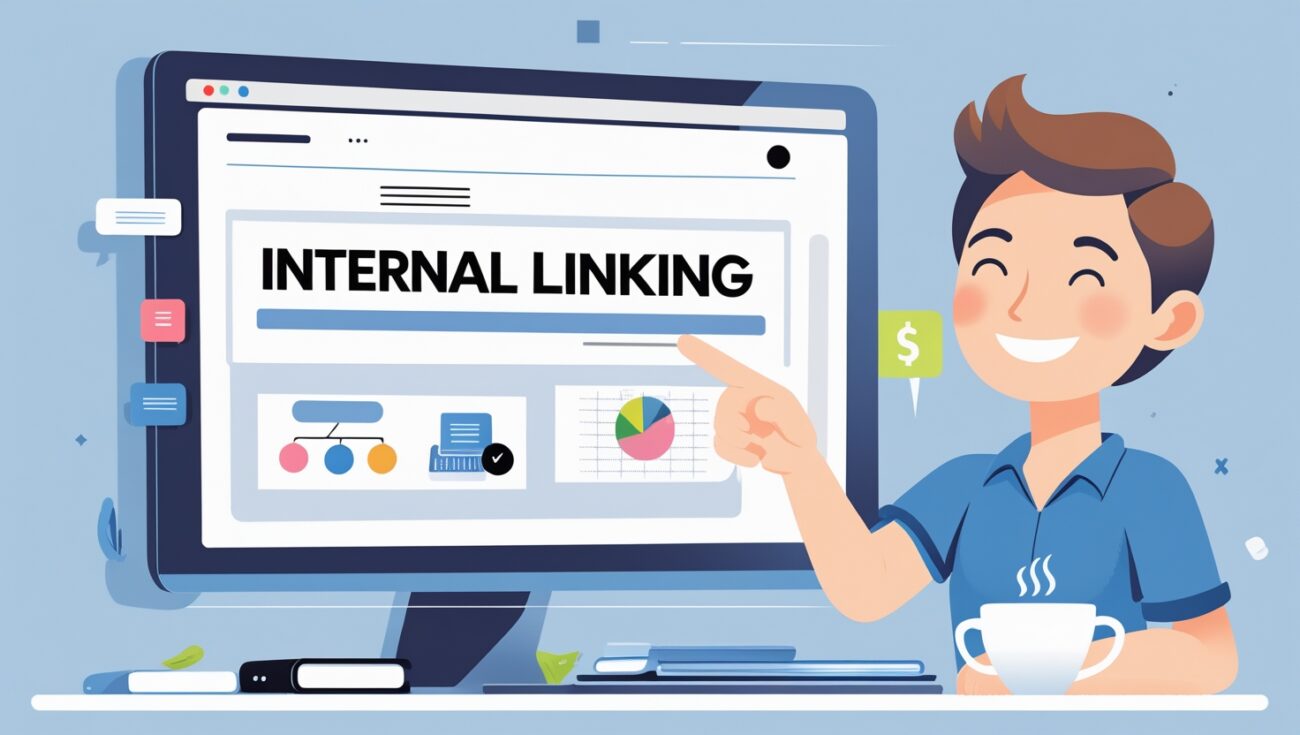Why Internal Linking Is More Affordable Than Paid Ads
In the digital marketing world, there’s a constant pressure to get quick traffic. Businesses are spending thousands, if not tens of thousands, of dollars on paid ads for immediate visibility. I’ve been there myself, watching my ad spend rise and my traffic disappear the moment I turn the campaigns off. It’s an expensive, transactional model.

Table of Contents
It wasn’t until I truly understood the power of a foundational SEO strategy that I realized there was a better way. I discovered that a well-planned internal linking strategy is a far more affordable, sustainable, and powerful way to drive high-quality traffic and revenue. Unlike paid ads, which are a constant expense, internal linking is a compounding investment that builds a long-term asset for your business.
The Paid Ads Model: A Costly Treadmill
- Pay-to-Play: The fundamental principle of paid ads is simple: you pay, you play. The moment your budget runs out, so does your traffic. You are renting your visibility, not owning it.
- Rising Costs: The competition for keywords is fierce. As more businesses enter the market, the cost-per-click (CPC) is constantly rising. It’s an expensive treadmill that you have to keep running faster just to stay in the same place.
- No Long-Term Asset: The money you spend on paid ads is a transaction. It does not build a long-term asset for your business. The clicks you get today are gone tomorrow, and you have to start all over again.
The Internal Linking Model: A Compounding Investment
- Low-Cost to Implement: The only “cost” of internal linking is your time. You are building authority and driving traffic with your existing content. There is no recurring monthly bill for clicks.
- Evergreen Traffic: Once a page ranks due to a strong internal link profile, it can generate free, organic traffic for months or even years to come. This is a foundational asset that will continue to work for you long after you’ve made the initial effort.
- The Compounding Effect: Every strategic internal link you add makes your website more authoritative. This benefits all of your content, not just the pages you link to. It’s a compounding investment where the return grows exponentially over time. This is why a tool that simplifies internal linking is so valuable—it makes this compounding effect easier to achieve.
The True ROI: A Direct Comparison
- Paid Ads ROI: The return on investment for paid ads is short-term and transactional. You get a sale today, but the money you spent to get that sale is gone, and you have to spend more tomorrow.
- Internal Linking ROI: The return on investment for internal linking is long-term and foundational. When you build a strong internal link profile, you not only get a sale today, but you also build a more authoritative website that will continue to generate traffic and sales for free. You are building an asset.
The Tool That Makes It All Possible
I know what you’re thinking: internal linking sounds great, but it’s a lot of manual work. That’s true. The biggest barrier to this low-cost strategy is the time it takes to do it manually. This is where automation comes in. Automated internal linking software can analyze your website and provide a prioritized, actionable list of linking opportunities. It makes this affordable, powerful strategy easy to implement at scale. If you want to build an internal linking strategy that works for you 24/7, I highly recommend exploring how Linkbot can help.
Conclusion: Build an Asset, Don’t Rent Visibility
Paid ads have their place for short-term campaigns and immediate visibility. But they should never be the only thing you do. A well-planned internal linking strategy is not just an SEO tactic; it’s a smart business investment. It’s the difference between renting your website’s visibility and building a powerful, self-sustaining asset that will generate traffic and revenue for years to come.
Stop paying for every click and start building an asset that works for you. Ready to build a more affordable and powerful website? Discover how Linkbot can simplify the process today.
My journey taught me that a major mistake is seeing all traffic as equal. The visitors I get from my organic rankings, powered by my internal linking strategy, are fundamentally different from the clicks I pay for. Organic traffic is often higher-quality, because the user is actively searching for a solution, not just passively clicking an ad.
The feeling of not being tied to a daily or monthly ad budget is an incredible emotional relief. I remember constantly worrying about whether my next campaign would be profitable or whether my competitors would outbid me. By investing in internal linking, I took control of my traffic source and gained a sense of security and stability I never had with paid ads.
A strong internal link profile also has a huge impact on your website’s overall trustworthiness and authority. When a user or a search engine bot lands on your page and sees a clear network of interconnected, relevant articles, it signals that you are a serious, comprehensive resource on the topic. This kind of professional organization is exactly what Google looks for.
The most important part of this foundational skill is building a consistent habit of linking. It’s not about a single audit and then forgetting about it. A good website is a living thing, and it needs regular maintenance to ensure your internal links stay clean, which is a key part of long-term SEO success.
I felt like I was finally in the driver’s seat of my marketing. For years, I had relied on expensive ad campaigns, which felt like I was giving up control of my SEO destiny. But by mastering a simple task like building my internal links, I was proactively building my site’s authority from the inside out, on my own terms, which was an empowering and exciting feeling.
By implementing a strategy that serves both SEO and conversions, you are also directly addressing Google’s E-E-A-T framework. You are demonstrating expertise by creating topical clusters, you are showing authority by linking from strong pages, and you are providing a better user experience, which is a key part of what Google looks for in a trustworthy website.
I’ll never forget the first time I applied my new internal link strategy to a page that was struggling to rank, and it shot up in the search results almost overnight. This was my “aha” moment. I realized that the value I was getting from a single, well-placed link far outweighed the cost of a hundred paid clicks. It was an undeniable, tangible win.
One of the greatest benefits I got from using an automated tool to manage my link profile was the “to-do” list it provided. Instead of being overwhelmed by the sheer size of my website, the tool gave me a prioritized, actionable list of fixes to make. It transformed a monumental, frustrating task into a series of manageable steps that I could tackle in just minutes.
It’s also crucial to understand the difference between a paid ad and a contextual link within helpful content. An ad interrupts a user’s experience. A contextual link enhances it by providing a logical, helpful next step. One feels like a sales pitch, the other feels like a recommendation from a friend. The latter is far more effective.
Ultimately, a strong internal link strategy is the key to building a website that is both high-ranking and highly profitable. It’s a powerful, low-cost strategy that ensures your website is always working for you, not against you.
My final piece of advice is to not be intimidated. Don’t worry about the high cost of paid ads. Just focus on making your website a better place for your readers. You will be amazed at the progress you make and the results you can achieve.
This isn’t just about saving money; it’s about building a better, more sustainable business. It’s about creating a foundational asset that will serve you and your audience for years to come.

